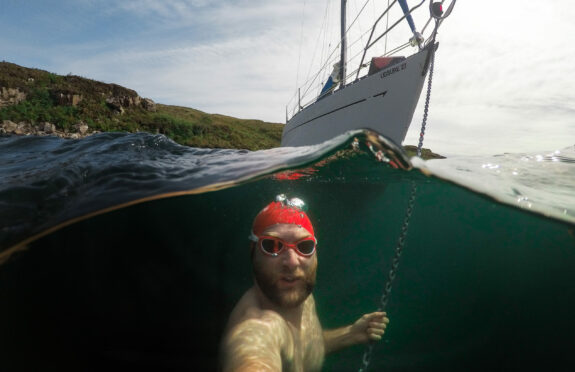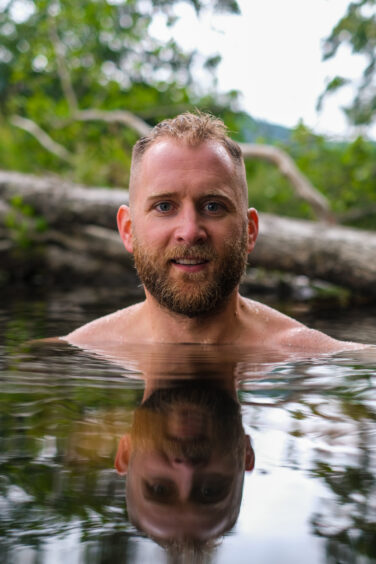
As a lifelong Gaelic speaker, outdoor enthusiast and broadcaster Calum Maclean is keen to do his bit to help safeguard the future of the language.
Best known for his wild swimming adventures, which have amassed thousands of views online, he’s joining forces with the Royal National Mòd to help show young people the opportunities that are out there using the language.
As part of this year’s festival, taking place in Perth this month, Sruth – Buainidh Aon Fhacal Ceud’ (Gaelic Conversation for young people) will invite well-known faces from the traditional Gaelic and music scene to meet and chat with pupils from primary and secondary schools across Scotland.
Maclean, who fronted BBC Alba series Dhan Uisge (Into the Water), said: “It’s an opportunity to meet us, to come and chat about some of the stuff we’ve done and how we’ve used Gaelic in our careers and also just in our lives as well.
“Everyone has a different journey. Maybe they grew up speaking it, a lot of people might have it in school but not at home, or have even come to it later in life. It’s always really interesting for young people to meet us and to see what opportunities are out there if they want to use Gaelic.”
Born in Australia but moving back to Scotland when he was 18 months old, Maclean grew up speaking the language, learning it in his early years alongside English.
He considers it a key part of his identity, and there are many friends and family with whom he only speaks in Gaelic.
“It’s effectively my first language,” he said. “When we were younger, we were given as much opportunity to hear it as possible.
“My Australian mum learned Gaelic as we went through primary school so she can speak it no problem but definitely has a bit of an Australian accent on it, which is cool!
“It’s who I am and I use it every day. I’ve got a relationship with some friends mainly in Gaelic and to speak to them in English would be weird.
“I try to spread the word to people that don’t have it, but also speakers, to encourage them to use it as much as possible in whatever they’re interested in doing.”
Maclean is keen to promote the language through his social media accounts, where he has over 20,000 followers on Instagram alone.
“Because we live in an English-speaking world there’s a lot of people that want to see Gaelic in an actual setting being used normally and that’s what I try and do,” he said.
“I also do videos teaching Gaelic, stuff to do with place names or hill names.
“Depending where you live, you can easily go a whole week without encountering Gaelic, so if I can put it in front of people it normalises it a bit more.
“If you see someone using it and you’re not so confident yourself, it can give you a bit of confidence to try to use it and get it out there.”
Gaelic’s inclusion on the language-learning app Duolingo, where it was introduced in 2019, has also bolstered the numbers of people gaining an interest.
“Duolingo’s been brilliant, it opens the door into learning a language, a great way of getting someone interested and it’s so easy, you can do it at home in your own time.
“It’s a gateway, and could lead to people wanting to learn more and meet people in real life that have it, speaking it outside of the situation of just your phone. It’s great to have Gaelic on such a big platform.”
@caldamac Tràigh some Gaelic #applecross #scottishgaelic #gàidhlig #facalfriday #fypscotland #scottishtiktok
Recently, Maclean has been using TikTok to get Gaelic out to a wider audience.
“You never know who your video’s going to land in front of. There are so many Americans commenting on my videos,” he said.
“Because people are spending so much time on social media, it’s a brilliant way to get it in front of more eyes. You’re not going to learn Gaelic necessarily through watching my videos but it’s a good way of getting people interested or reignite an interest for people who have drifted away from it.”

Enjoy the convenience of having The Sunday Post delivered as a digital ePaper straight to your smartphone, tablet or computer.
Subscribe for only £5.49 a month and enjoy all the benefits of the printed paper as a digital replica.
Subscribe